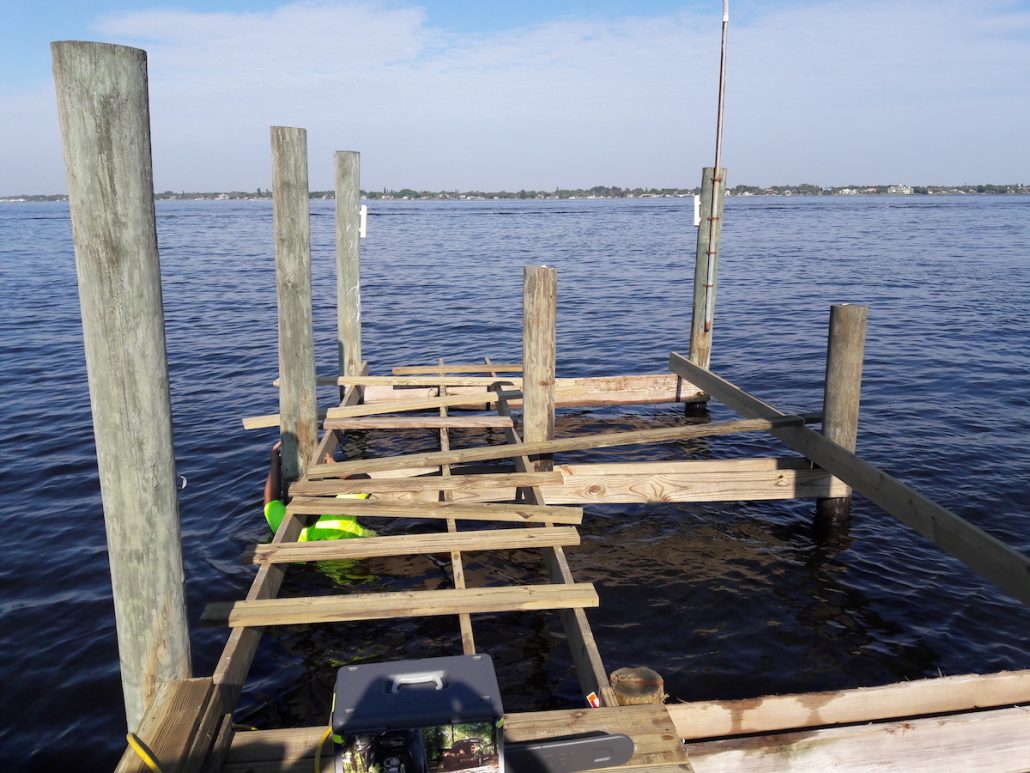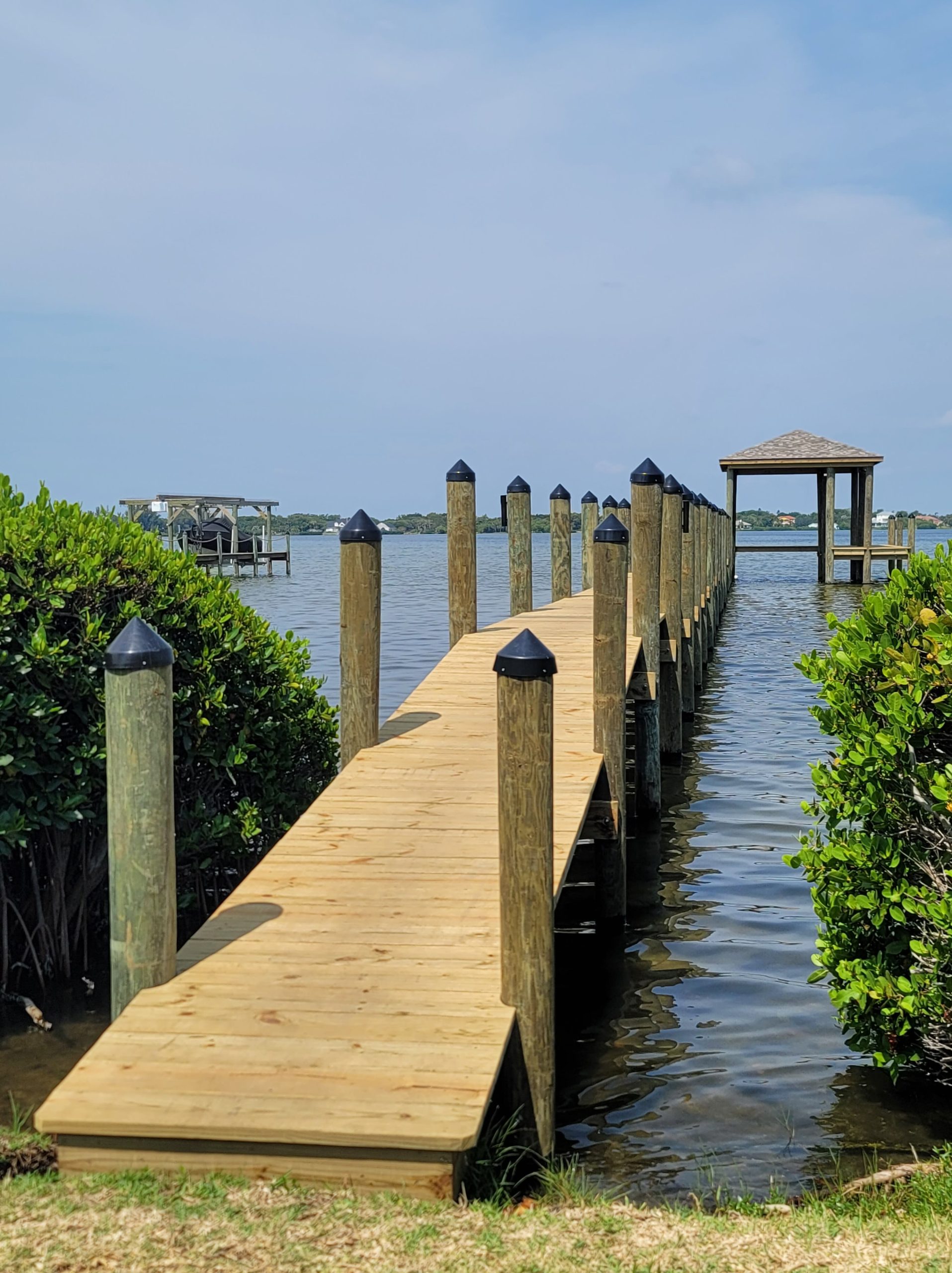The Significance of Timely Dock Repairs for Waterfront Security
Wiki Article
Effective Dock Repair Techniques: Guaranteeing Structural Integrity
Making sure the architectural honesty of anchors with efficient repair service methods is vital for the durability and safety and security of aquatic centers. This entails a multi-faceted strategy beginning with thorough examinations using advanced modern technologies like sonar equipment and remotely ran lorries (ROVs) to identify both noticeable and concealed damages. Subsequently, picking the right repair work materials, such as corrosion-resistant alloys and composite materials, is critical for durability. Architectural support techniques, including the implementation of cross-bracing systems and load-distribution plates, play a crucial duty in mitigating anxiety points. Nonetheless, the relevance of these methods becomes obvious when checking out innovative repair service methods and preventative upkeep techniques.Evaluating Dock Damages
Assessing dock damage is a critical initial step in guaranteeing the structural stability and security of any type of docking facility. Key elements to analyze include the dock's foundation, pilings, decking, and hardware (Dock Repairs).Structural engineers or qualified inspectors normally execute these analyses using specialized techniques and devices. Undersea evaluations could employ finder devices or remotely operated lorries (ROVs) to find submerged damage. Over water, aesthetic assessments are matched by utilizing moisture meters and various other diagnostic tools to reveal underlying problems not promptly visible to the nude eye.

Finding Repair Service Products
Choosing the proper repair work materials is a critical step in the dock remediation process, one that directly affects the longevity and performance of the repaired structure. Material choice must be driven by factors such as environmental conditions, load-bearing requirements, and compatibility with existing dock components.Along with wood, composite products are increasingly preferred due to their sturdiness and low upkeep demands. Compounds, generally made from a mix of plastic and timber fibers, offer outstanding resistance to rot, bugs, and UV damages. For steel docks, selecting corrosion-resistant alloys such as galvanized steel or marine-grade aluminum is important to prevent corrosion and make sure structural stability in saline water problems.
Epoxy resins and marine-grade sealers are important for fixing cracks and sealing joints, providing a water-proof obstacle and boosting the dock's total toughness. By diligently choosing premium products, dock fixings can accomplish long-lasting results, consequently securing versus future degradation and making sure secure, reliable use.
Structural Reinforcement Methods
Reliable architectural reinforcement methods are essential in ensuring the stability and longevity of dock repair work. One essential technique includes using steel or composite support bars (rebar) within concrete frameworks. Rebar gives added tensile toughness, preventing cracks and distributing loads much more uniformly. This technique is especially efficient for docks exposed to heavy loads or rough ecological problems.An additional necessary method is the application of fiber-reinforced polymers (FRP) check that These materials supply high strength-to-weight proportions and superb resistance to rust, making them optimal for strengthening wooden or concrete anchors. FRP can be applied in sheets or strips and bound with epoxy resins to boost architectural integrity.
Supporting and anchoring systems likewise play an important role in architectural reinforcement. Cross-bracing, making use of steel or wooden light beams, can combat lateral pressures, decreasing swaying and activity. Securing systems, such as helical piers or driven heaps, provide a stable foundation by moving loads to much deeper, much more steady dirt layers.
Lastly, the integration of load-distribution plates can help disperse weight more equally throughout the dock's surface, mitigating localized tension points. These techniques collectively guarantee that anchors stay robust and secure, qualified of standing up to the rigors of their functional environment.
Advanced Repair Service Methods

An additional innovative technique includes underwater welding, which enables repairs to be performed without the requirement to dewater the location. This method is specifically advantageous for attending to structural problems in immersed dock components, why not try these out guaranteeing very little disturbance to procedures. Enhanced welding strategies, combined with robot systems, provide accuracy and reliability, consequently prolonging the lifespan of the dock.
Additionally, cathodic security systems are executed to protect against deterioration in metallic dock structures. By utilizing sacrificial anodes or pleased current systems, these methods properly reduce the electrochemical procedures that cause material degeneration.
Finally, progressed surveillance innovations, such as structural wellness surveillance (SHM) systems, give real-time information on the problem of dock structures. These systems enable positive upkeep and prompt interventions, inevitably making certain the long-lasting structural integrity of the dock.
Upkeep and Prevention
Maintenance and avoidance are essential ideas that underpin the long life and security of dock structures. Normal assessments are critical, permitting early discovery of deterioration, possible weaknesses, and ecological effects. A positive strategy, including routine checks for corrosion, rot, and structural shifts, mitigates pricey repair services and lengthens the dock's functional life.Preventive actions ought to consist of using safety layers to steel elements to defend against rust and using treated timber to stand up to decay. Additionally, guaranteeing correct drainage and air flow can protect against water buildup, which is a typical source of architectural destruction. Including top quality materials and sticking to manufacturer guidelines during construction and fixing stages also play important functions in improving toughness.

Training employees in dock upkeep best techniques guarantees constant application of safety nets. Leveraging technical advances, such as drones for evaluations and sensing units for real-time tracking, can further boost upkeep initiatives. By prioritizing maintenance and avoidance, dock owners can make certain structural stability, functional safety, and affordable management over the dock's lifespan.
Conclusion
In conclusion, maintaining the structural honesty of aquatic centers requires extensive dock fixing techniques. Advanced repair service methods, paired with routine upkeep methods, make certain the dock stays risk-free and functional under diverse ecological problems.Ensuring the architectural integrity of docks with efficient repair techniques is critical for the durability and security best site of aquatic centers.Selecting the proper repair work materials is a crucial step in the dock remediation process, one that directly influences the longevity and efficiency of the repaired structure.Reliable structural support techniques are vital in making sure the security and long life of dock repairs. By prioritizing upkeep and avoidance, dock proprietors can make sure structural stability, operational security, and cost-effective monitoring over the dock's lifespan.
In verdict, keeping the architectural honesty of marine facilities necessitates thorough dock fixing strategies.
Report this wiki page